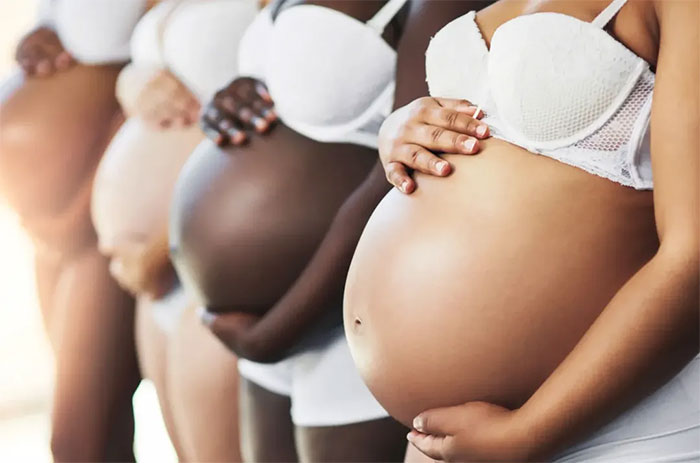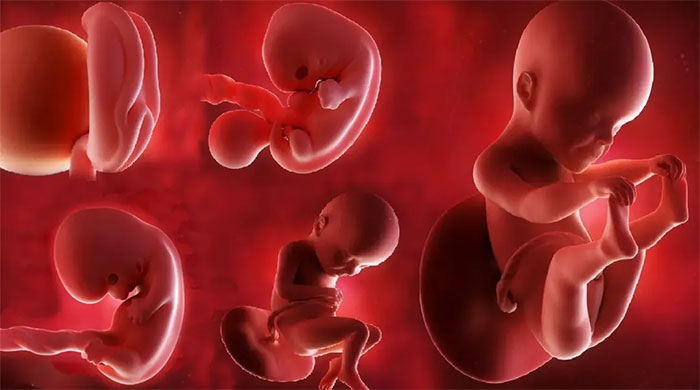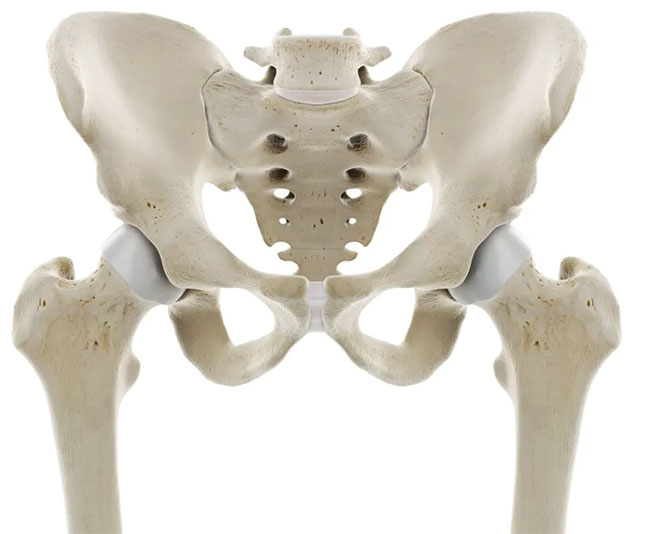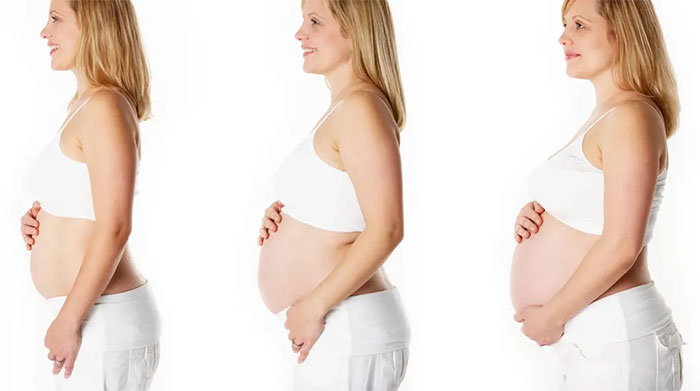The issue is that the human body has not evolved enough to carry a fetus longer than 9 months.
Longer pregnancies face two biological trade-offs. Humans would need a larger pelvic structure to accommodate a bigger and more developed baby, but this would compromise our ability to walk. Additionally, a longer gestation period would reduce the mother’s chances of survival.

Longer pregnancies face two biological trade-offs.
From reptiles and amphibians to birds, young animals in the animal kingdom often have the ability to move, run, or swim very early on. Egg-laying reptiles and amphibians typically hatch without any parental supervision. Birds and mammals care for their young. Primates, such as orangutans and humans, are the most notable examples of investing in the care and upbringing of their offspring.
Humans are born unable to roll over or even lift their heads, let alone walk. But why is this the case? Why doesn’t the human fetus develop longer in the womb or grow faster? Why does human gestation typically last 9 months, and why not longer to ensure that newborns have a higher chance of survival?
First, let’s explore how a fetus develops in the womb.
The larger the animal, the longer the gestation period
The duration of pregnancy increases with the average body mass of mammals. Squirrels and mice are pregnant for less than a month, while giraffes and sperm whales have gestation periods of 400 to 500 days. Elephants top the chart with a pregnancy lasting up to 600 days, nearly two years. Humans and most primates fall somewhere in between, averaging around 200 days.
There is also significant variation in gestation length within a species. The gestation time for humans varies the most by five weeks, excluding premature and overdue births.
Each day of these nearly 200 days is crucial. Development in the womb is incredibly rapid. A single cell absorbs nutrients from the amniotic fluid, gradually forming parts, developing the heart, lungs, skin, hair, and intestines. From mere chains of chemical molecules, we can create miniature versions of ourselves.

Fetus.
The development of the fetus is divided into three stages: the germinal stage, the embryonic stage, and the fetal stage.
The germinal stage is the shortest, lasting only two weeks. The cell mass from the fertilized egg travels down to the uterus and implants itself into the uterine lining, triggering a series of chemical changes in the mother. The cells are like a blank canvas, beginning to differentiate. One cell becomes a heart cell, another a nerve cell, bone cells, and so on.
The embryonic stage begins in the third week and lasts until the eighth week. The nervous system forms the spinal cord during this time.
Most organs and limbs develop into their final form during the fetal stage. New nerves and blood vessels form each day, while the digestive and respiratory systems develop fully before the baby is ready to be born.
The pelvic issue
Most anthropologists and biologists believe that newborns do not develop into completely independent physical and mental beings due to the width of the pelvic structure. During birth, the baby should turn downwards, with the head facing the birth canal. The journey into the world is critical and can only begin once the head emerges first.
Thus, there is a trade-off. How large can the head and brain inside it grow before it becomes too big to pass through the pelvis and birth canal?
At birth, a baby’s head measures about 20 cm in circumference, which is 33% of the size of an adult’s brain. In comparison, a newborn chimpanzee’s brain is 40% the size of an adult chimpanzee’s brain. That 7% difference may seem insignificant, but it can lead to profound differences in capabilities at birth. For babies to be born with abilities similar to those of newborn chimpanzees, the gestation period would need to extend from 18 to 21 months, more than double the usual 9 months.

Women generally have larger pelvises than men.
The size of a newborn’s head would also need to increase from the current average of 9 cm to around 11-12 cm. The width of the pelvic structure would need to increase by about 3 cm. Some individuals have narrower hips, while others have wider ones, but this variation has little effect on the size of the fetus.
Other researchers argue that this small size is an advantage. From birth until reaching the first 3%, the brain develops at an astonishing rate of about 1% per day. As the brain develops, more information is stored. Children have incredible learning abilities. They can absorb and assimilate information and quickly learn about the world.
Learning requires the expansion of brain size as more neurons and gray matter are added. The smaller the brain at birth, the faster newborns can learn and develop their brains to respond to new information.
However, many opinions suggest that the pelvic structure has little relation to the level of development, brain size, head size, and ultimately the length of gestation.
A larger newborn head would require an expansion of the pelvic structure. In theory, this would be extremely detrimental information for women.
Women generally have larger pelvises than men. Therefore, walking and running would be less efficient. Experimental tests have shown that there are many differences between individuals. There have been cases of people born with head circumferences of 11-12 cm, so the hypothesis that pelvic restriction affects the child is entirely valid.
Metabolism
Recent studies show that gestation length is related to the energy needs of the fetus and the metabolic capacity of the mother.
Once again, we face a biological trade-off. Keeping the fetus in the womb increases its chances of survival, but it also decreases the mother’s survival chances, as it draws nutrients from her.

Would it be better to take the fetus out of the womb early just to preserve the health and survival chances of the mother?
Humans are not the only species facing this dilemma. Mammals give birth when parents cannot support the fetus metabolically and when the fetus is just viable. Humans reach this point at the 40th week, and even one month of pregnancy requires double the average energy we burn in a day.
What does 40 weeks mean for human evolution?
Whether the pelvic structure or parental metabolism is the limiting factor, most anthropologists believe that the helplessness of young among primate species has altered the course of human evolution.
Humans are social mammals, and when a group of parents is busy caring for their offspring and cannot gather food, other community members step in to help. Infants may have brought the human community together, teaching us to bond and communicate more effectively.


















































